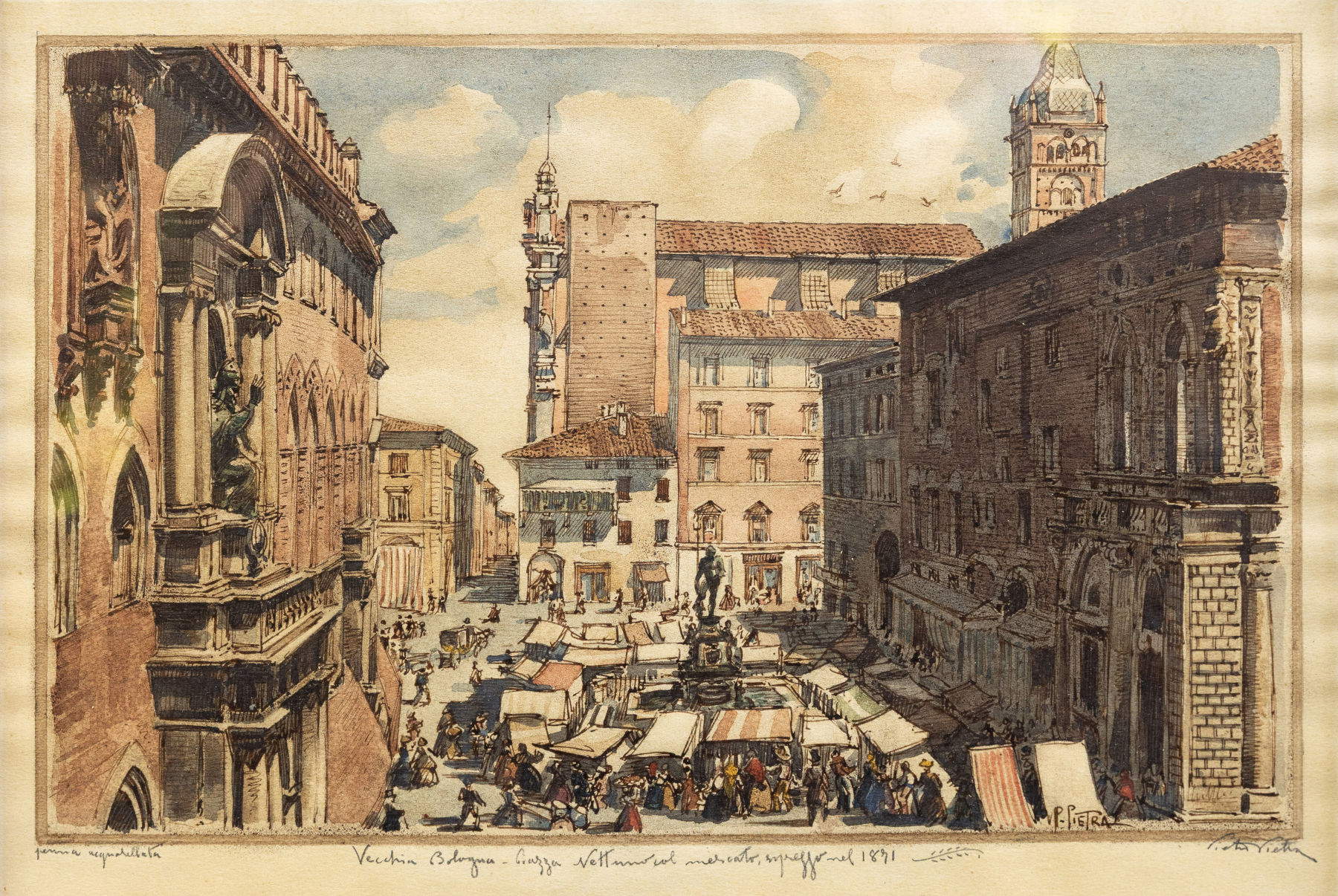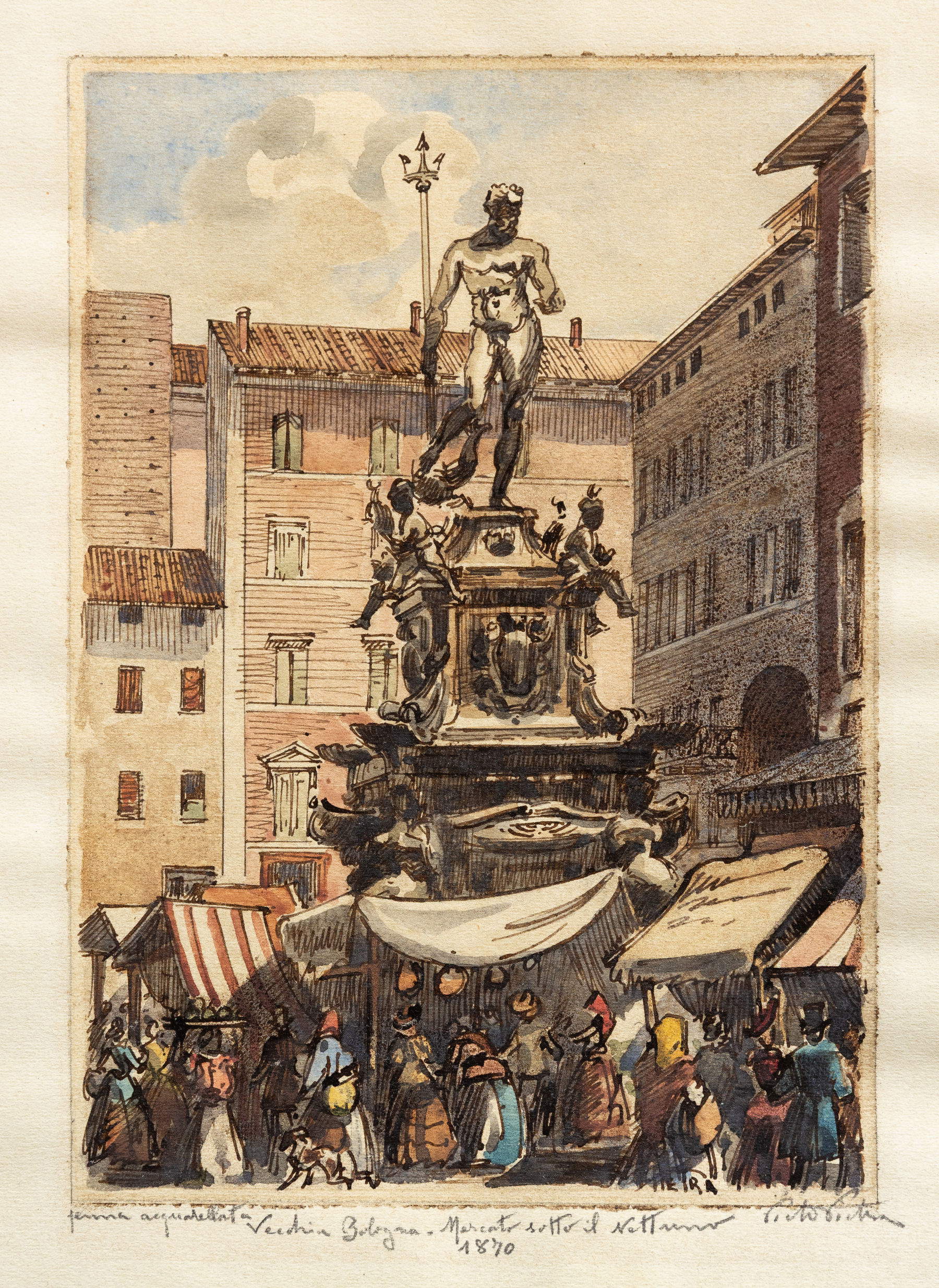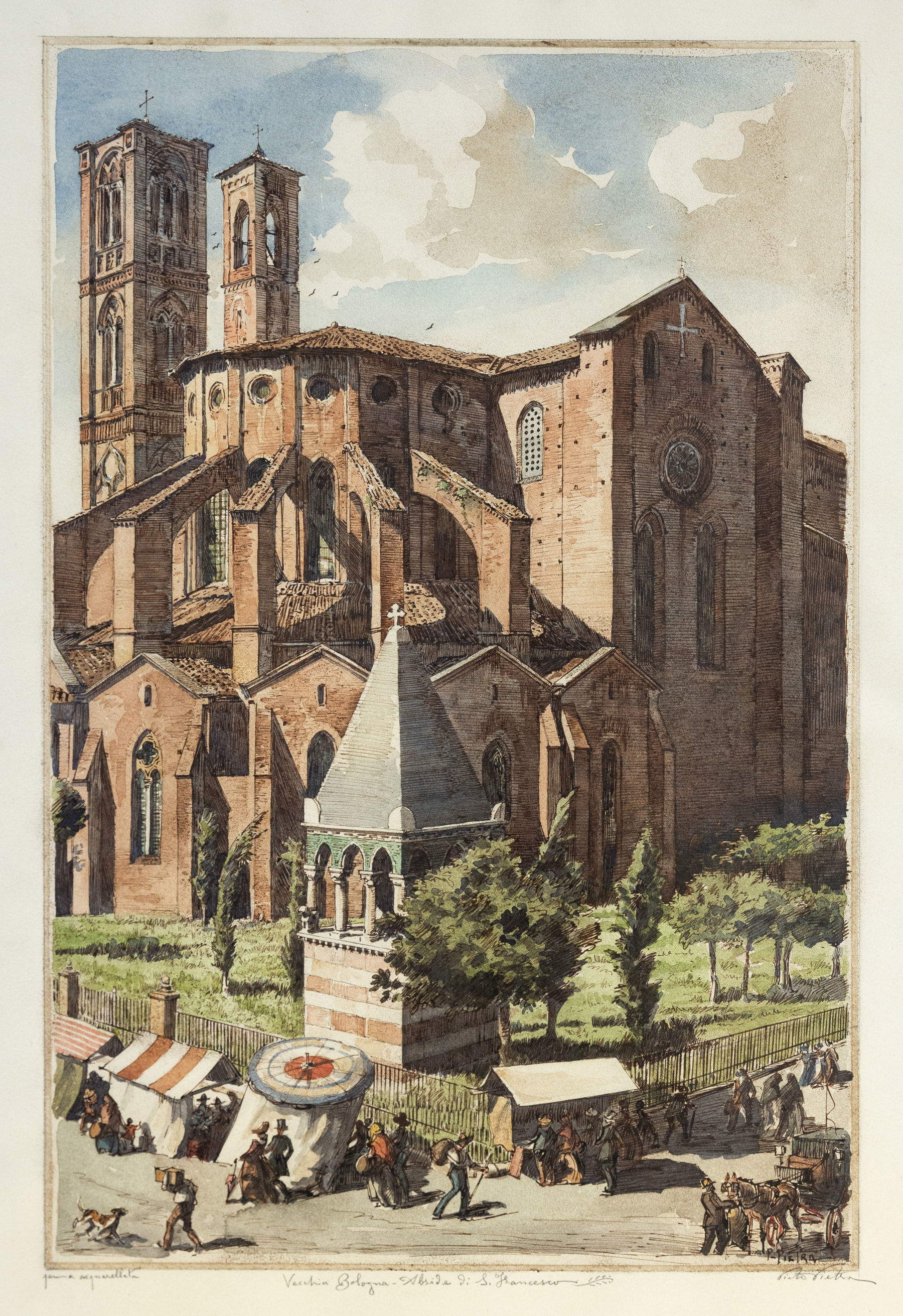From December 6, 2025 to February 12, 2026, Palazzo d’Accursio in Bologna is hosting the exhibition Pietro Pietra (1885-1956). The Power of Sign, promoted by theBologna Association for the Arts and curated by Daria Ortolani. The exhibition, organized on the occasion of the 140th anniversary of the artist’s birth, presents eighty-two original works including engravings, drawings, watercolors and paintings from the Pietra family’s historical archives and private collections. It is an anthological itinerary that restores the complexity of a central figure in the Bolognese graphic scene between the 19th and 20th centuries. The main core of the exhibition includes drawings from life and etchings dedicated to the animal world, alongside a group of watercolors depicting views of the Bologna beloved by the artist. In his views, Pietra combines perspective precision and architectural taste with a narrative and theatrical sense that restores urban vitality. Human figures, reduced to essential features, become elements of measure and rhythm in the composition, giving depth and movement. His images tell of a city that has now disappeared, marked by the restorations and demolitions of the late 19th century, whose memory the artist reconstructs through the sensibility of watercolor, suspended between realism and vision.
Alongside the urban theme, the exhibition devotes ample space to the animal representations that constituted a fundamental part of Pietra’s production. The study conducted between 1914 and 1915 at the Zoological Garden in Rome was decisive for the development of his poetics. In his drawings, made with naturalistic rigor and a marked intensity of expression, each creature appears caught in its own individuality. Lions, tigers, dogs, cats and horses emerge with plastic strength but also with an empathetic component, anticipating a more modern and respectful approach to the animal world. In these images, anatomical precision is intertwined with a psychological investigation, in which the synthetic and rapid stroke becomes a means of translating the movement and vitality of the subject. Pietro Pietra’s graphic research is located in the nineteenth-century Bolognese tradition, but at the same time expands its boundaries with a personal language based on freedom of sign and technical experimentation.


The artist uses etching, drypoint, watercolor pen and oil paint with ease, revealing a constant attention to luministic rendering and compositional structure. His interest in synthesis and the dynamic construction of the image harks back to Leonardo’s lesson on inner motion, a principle that guides his representation of reality. The exhibition also proposes a path of visual and technical education. The intent is to restore value to the practice of engraving, which has often remained on the margins of Italian art history. For this reason, a practical compendium on the main engraving techniques, both published by Paolo Emilio Persiani in 2025, will be published alongside the monographic catalog. The initiative is part of the graphic revival promoted by Cesare Ratta and Stanislao Petri, within which Pietra occupies a prominent place as an innovative engraver of the early 20th century. Etching, in particular, represents for him the most authentic medium of expression, capable of blending technique, introspection and personal language.
The exhibition will be accompanied by a program of side events. On January 15, 22 and 29, 2026, at 5 p.m., Cultural Dialogues at Palazzo d’Accursio will return, a series of lectures with free admission involving scholars and art historians in the Farnese Chapel. The Bologna Association for the Arts will also organize guided tours and in-depth moments, with the collaboration of interns from the University of Bologna and the Academy of Fine Arts, available daily at the exhibition to accompany visitors on free thematic tours. The project enjoys the patronage of the University of Bologna, the Academy of Fine Arts, the Municipality of Bologna, the Emilia-Romagna Region and the Venturoli Artistic College Foundation.

Pietro Pietra was born in Bologna on January 28, 1885, into an artistic family: his father Giulio Cesare, a restorer and drawing teacher, directed his education. He studied at the Academy of Fine Arts and the Professional Institute for the Figurative Arts, a pupil of masters such as Giovanni Bedini, Carlo Casanova, Giuseppe Tivoli and Pompeo Fortini. He distinguished himself early as an engraver and draughtsman, specializing in the representation of the animal world through techniques such as etching, aquatint, drypoint and woodcut. To the practice of drawing from life he flanked a rich production of watercolors, including the Vecchia Bologna series, dedicated to his hometown. At the same time he devoted himself to oil painting, charcoal, pastel, and decorative and scenographic arts: among his works are the decorations of the Chapel of St. Joseph in the Church of San Paolo di Ravone (1933) and of the Hall of the Zoologists in Palazzo Caprara Montpensier (1934, now lost).
In the 1940s he collaborated as an illustrator for children’s magazines and participated in numerous exhibitions, including the exhibitions of the Francis France Society, the International Print Makers Exhibition in Los Angeles (1921-1938) and the International Exhibition of Etching in New York (1923-1924). In 1924 he held a solo exhibition at the Circolo di Cultura Gallery in Bologna. After his death in 1956, his work has been rediscovered since the 1970s through retrospectives and exhibitions, particularly at the D’Azeglio Gallery. Today his works are kept at MAMbo, the Fondazione Cassa di Risparmio di Bologna and the University of Bologna Museum System, as well as in numerous private collections.
 |
| Bologna dedicates an exhibition to Pietro Pietra on the 140th anniversary of his birth |
Warning: the translation into English of the original Italian article was created using automatic tools. We undertake to review all articles, but we do not guarantee the total absence of inaccuracies in the translation due to the program. You can find the original by clicking on the ITA button. If you find any mistake,please contact us.